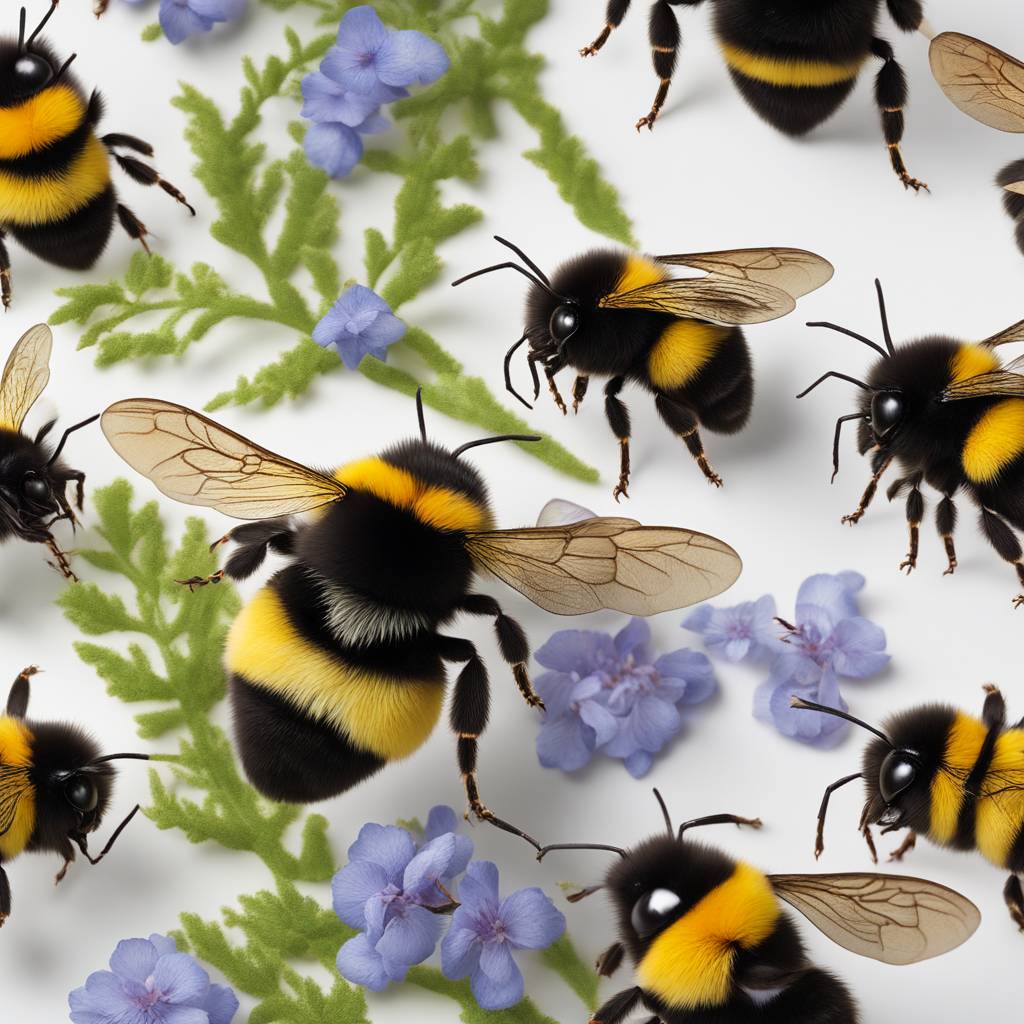A team of researchers led by Colorado State University has conducted the first range-wide genetic study of the endangered rusty-patched bumblebee, revealing alarming trends that could lead to the species’ extinction within the next couple of decades. The rusty-patched bumblebee was the first bee species to be federally listed as endangered in 2017, and its decline can be attributed to a combination of factors such as pesticides, pathogens, habitat loss, and climate change. The study, published in the Journal of Insect Science, will inform conservation and recovery efforts for this important pollinator, which has declined from about 90% of its historic range.
The in-depth genetic examination of the rusty-patched bumblebee revealed concerning trends in remaining populations, with fewer colonies than a stable species would have and a high rate of inbreeding. Inbreeding can threaten the long-term viability of a species, as it leads to the presence of diploid males with two sets of the same chromosomes and lacking genetic diversity. This can result in populations facing a “death sentence” due to incompatible genetic systems with other populations of the same species. The study identified three genetically distinct populations among the rusty-patched bumblebees in the upper Midwest, central Midwest, and Appalachians, suggesting that potential recovery efforts will need to be tailored to each population.
The research highlights the importance of understanding population differentiation for captive rearing programs, as bees from different populations may not be genetically compatible or may not survive once released into the wild. Co-author Tamara Smith, a wildlife biologist with the U.S. Fish and Wildlife Service, emphasized the value of the study in refining healthy colony targets and optimizing conservation efforts in genetically distinct areas. Protecting pollinators like bumblebees is crucial for food production and supporting ecosystem health and resilience, as well as many crops and flowering plants that depend on them.
While the decline of the rusty-patched bumblebee is concerning, there is hope for its recovery through habitat restoration programs and pollinator-friendly home and community gardens. By restoring habitat and the bee’s preferred plants, as well as implementing conservation planning, there is potential for the species to recover. Restoration projects that benefit bumblebees also benefit other wildlife and promote landscape health in general. The study underscores the importance of collaborative efforts and partnerships in surveying and collecting genetic samples from endangered species to inform conservation and recovery strategies.
Surveying the rusty-patched bumblebee across its U.S. range required a vast network of collaborators with proper permits to collect genetic samples from the endangered species. The project was primarily funded by the U.S. Geological Survey Science Support Partnership and the Great Lakes Restoration Initiative’s Threatened and Endangered Species Template through the U.S. Fish and Wildlife Service. The study was led by a team of researchers from federal and state agencies, universities, nonprofits, and consultants, highlighting the importance of interdisciplinary collaboration in conservation efforts. Through research, conservation planning, and habitat restoration, there is hope for the recovery of the rusty-patched bumblebee and other endangered species.













